It looks like you're using an Ad Blocker.
Please white-list or disable AboveTopSecret.com in your ad-blocking tool.
Thank you.
Some features of ATS will be disabled while you continue to use an ad-blocker.
21
share:
The Great Bath built at Mohenjo Daro around 4,600 years ago was a product of Harappan civilization, in this paper
The Indus Fish the meaning of the
often seen Fish symbol is discussed with regards to a Fish cult of the Great Bath.
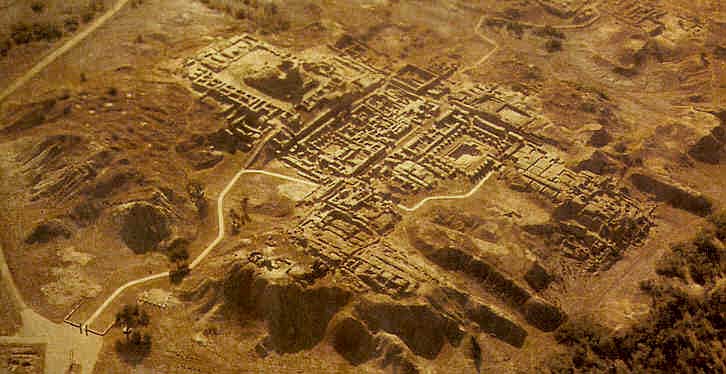
The sign for fish of which there were seven variants had also the meaning of 'star' and in greater context refered to water nymphs.

What the paper discusses is an elite class of 'Fish-People or water nymphs whose cult was based upon the Great Bath;
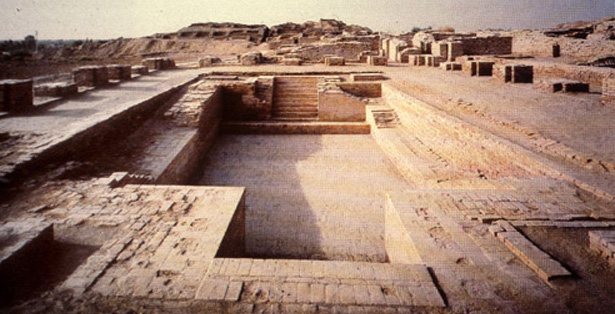
The frequency of occurance of the seven fish signs and their association with gender is discussed were it is found the fish-women would have been somewhat more numerous than the fish-men;

In effect the Great Bath was a forerunner of the tradition of the sacred fish ponds which were seen as forbidden to eat, the major differance being that in the first instance the concern was with fish people rather than symbolism.
It seems likely that there was connectivity with the seven fish signs of Harappan culture and that of the Sumerian tradition of the seven Apkallu sages that emerged from the Apsu, that their female counterpart in the Indus valley were the Apsaras;

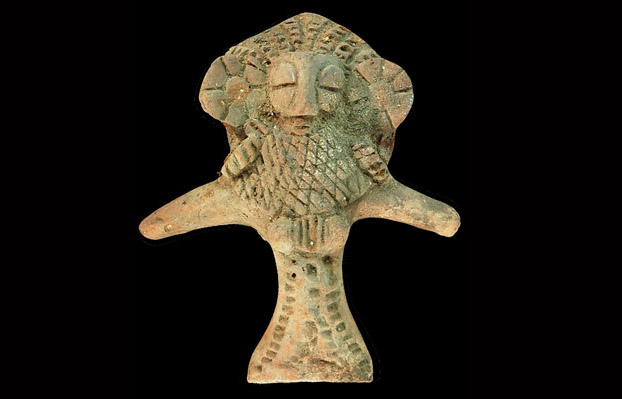
In general it can be seen that the water nymphs could develop into astral Goddess' associate with the coming and going of the light, there is correspondance with a Goddess of beauty that emerges from the waters, in Sumeria this was the role of the Goddess Nanse daughter of Enki, that wore a dress composed of fishes.
There is also a cult of twins descended from the sacred fishes, whilst these can be considered the first mortals perhaps it was seen as more the case that they were the first mortals descended from the fishes, and it was their offspring that swam in the Great Bath.

Place of Origin

The sign for fish of which there were seven variants had also the meaning of 'star' and in greater context refered to water nymphs.

What the paper discusses is an elite class of 'Fish-People or water nymphs whose cult was based upon the Great Bath;
1. FISH signs represent a special category of persons in the Indus society.
2. FISH-women appear to be more important than fish-men within the special category.
3. FISH -women are accorded a prominent place among the seal-owning ruling classes.
4. The fact that there are only seven fish signs, each of them occurring also with the plural suffix indicates that the fish words are not proper names, but appear to be common nouns indicating titles or categories like classes or groups.

The frequency of occurance of the seven fish signs and their association with gender is discussed were it is found the fish-women would have been somewhat more numerous than the fish-men;
The second and even more surprising feature is the apparent dominance of the female over the male in the category of FISH signs as shown by statistical analysis FISH-women outnumber FISH-men by three to two.
If frequency of occurrence of names and titles on seals is considered an index of the relative importance of the seal-holder, FISH-women clearly outranked the FISH-men in the Indus polity

In effect the Great Bath was a forerunner of the tradition of the sacred fish ponds which were seen as forbidden to eat, the major differance being that in the first instance the concern was with fish people rather than symbolism.
Since almost every house in Mohenjodaro had a bathroom, there should have been no need for a public bath; nor would such a bath be located on the top of the Citadel Mound
In short, the so-called ‘Great Bath’ was a Sacred Pool for ritual bathing by the priests and priestesses of the Temple...
What is new in the present study is that interpretation of the function of the ‘Great Bath’ has led to the identification of the FISH signs as ideograms representing the water nymphs whose activities centered round the Great Bath
It seems likely that there was connectivity with the seven fish signs of Harappan culture and that of the Sumerian tradition of the seven Apkallu sages that emerged from the Apsu, that their female counterpart in the Indus valley were the Apsaras;

They were essentially unattached and free celestial nymphs who occasionally descended on the earth to form temporary unions with rishis or kings These lotus-ponds were generally the resort of a special class of water-deities or water-witches, the apsaras.
The apsarases are described as irresistibly beautiful women who would entice men to consort with them and eventually lead the heroes to destruction.
These bathing beauties were also accomplished in song and dance. The demigoddesses had individual names and each was associated with some particular locality.
Several ancient Indian dynasties were supposed to have descended from the temporary union of some particular apsaras with a hero.

In general it can be seen that the water nymphs could develop into astral Goddess' associate with the coming and going of the light, there is correspondance with a Goddess of beauty that emerges from the waters, in Sumeria this was the role of the Goddess Nanse daughter of Enki, that wore a dress composed of fishes.
Rising resplendent as from a bath, showing her charms, she comes with light driving away the darkness”. The unusual imagery makes it clear that Ushas represents not merely the physical phenomenon of dawn, but is in fact an apsaras. As the Mesopotamian Inanna-Ishtar goddesses are associated with the morning and evening star, so is Vedic Ushas with the rising and setting of the Sun at Dawn and Night.
There is also a cult of twins descended from the sacred fishes, whilst these can be considered the first mortals perhaps it was seen as more the case that they were the first mortals descended from the fishes, and it was their offspring that swam in the Great Bath.
The expression yama means literally ‘twin-born, Yama and his sister YamiÏ are the primeval twins born to the ‘gandharva in the waters’ the ‘aqueous (water) nymph’ Yama is considered to be the first-born among mortals. Yama and his twin sister YamiÏ were the progenitors of the human race.

Place of Origin
a reply to: Kantzveldt
Do you think the water nymphs could've been represented by human female priestess types, chosen by the priest class? lol.
There does seem to be a hint of a culture of worshipping avatars from the Indus Valley religions, mainly Hinduism.
Do you think the water nymphs could've been represented by human female priestess types, chosen by the priest class? lol.
There does seem to be a hint of a culture of worshipping avatars from the Indus Valley religions, mainly Hinduism.
a reply to: Kantzveldt
Archive for high priestess of the silver star tarot card..
18+
faustuscrow.wordpress.com...
The sign for fish of which there were seven variants had also the meaning of 'star' and in greater context refered to water nymphs.
Archive for high priestess of the silver star tarot card..
Egyptian ‘Nu’ (nuː ‘watery one’), also called Nun (nʌn or nuːn ‘inert one’), which is the deification of the primordial watery abyss in Egyptian mythology. In the Ogdoad cosmogony, the word ‘Nu’ means ‘Abyss.’
The Ancient Egyptians envisaged the oceanic abyss of the Nun as surrounding a bubble in which the sphere of all life is encapsulated, representing the deepest mystery of their cosmogony, which basically refers to the amniotic waters of the womb. In Ancient Egyptian creation accounts the original mound of land comes forth from the waters of the Nun.
The letter Nun is thought to have come from a pictogram of a snake (the Hebrew word for snake, nachash begins with a Nun and snake in Aramaic is nun) or eel. Some have hypothesized a hieroglyph of a fish in water for its origin (in Arabic, nūn means large fish or whale).
The amphibious symbolism of Nu is also associated with the Nommo’s, who are mythological ancestral spirits (sometimes referred to as deities) worshipped by the Dogon tribe of Mali. The word Nommo is derived from a Dogon word meaning ‘to make one drink.’ The Nommo’s are usually described as fish-like.
18+
faustuscrow.wordpress.com...
edit on 29-12-2014 by Wifibrains because: (no reason given)
a reply to: Wifibrains
That's pretty dark but i suppose suitably weird, there is the tradition of refinement in terms of arts and crafts as well as refinement of form and perfection of beauty associated with the fish-people, as well as refinement in terms of adaptation of civilization, hence i think their association with sensuality and seduction.
Association with evil spirits according to the Hebrew tradition is in the sense of their spirit living on in their descendants, largely to discredit the Mesopotamian tradition of positive contact with fish-people.
They do also have association with the Pleiades in terms of the seven stars, there is connectivity seen to that region above Taurus with the fish symbol.
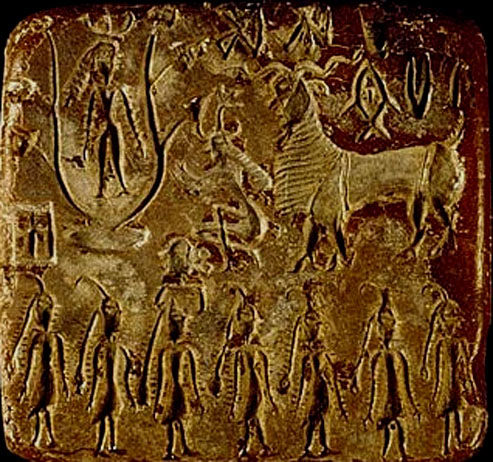
That's pretty dark but i suppose suitably weird, there is the tradition of refinement in terms of arts and crafts as well as refinement of form and perfection of beauty associated with the fish-people, as well as refinement in terms of adaptation of civilization, hence i think their association with sensuality and seduction.
Association with evil spirits according to the Hebrew tradition is in the sense of their spirit living on in their descendants, largely to discredit the Mesopotamian tradition of positive contact with fish-people.
They do also have association with the Pleiades in terms of the seven stars, there is connectivity seen to that region above Taurus with the fish symbol.

...the seven apsarases are always located near water bodies and referred to in the plural. They provide a crucial link between the Northern Seven Mother Goddesses and the Southern Seven Virgins.
a reply to: Kantzveldt
Interesting!... From that same site...
From wiki...
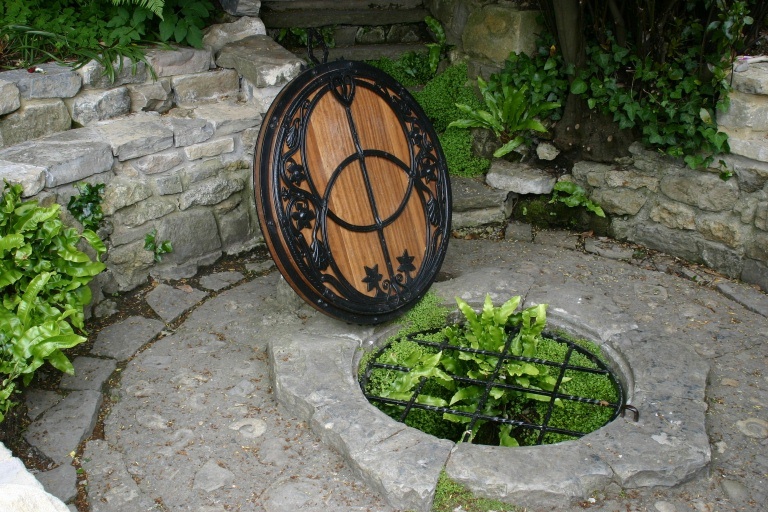
Then there is this called The Seven Bowls Flow Form and Vesica Piscis shaped pool...
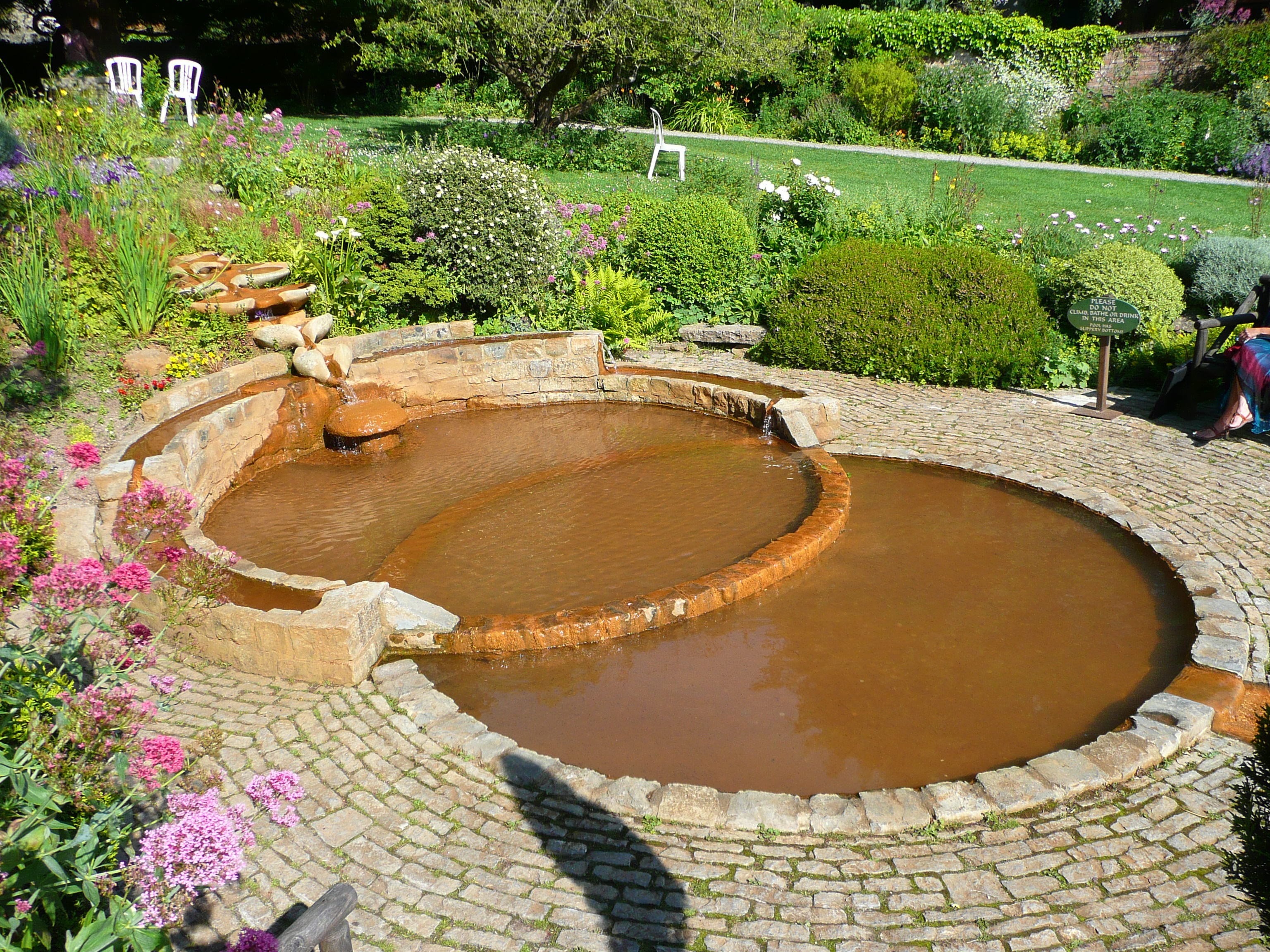
..the seven apsarases are always located near water bodies and referred to in the plural. They provide a crucial link between the Northern Seven Mother Goddesses and the Southern Seven Virgins.
Interesting!... From that same site...
As mentioned, The fish is an ancient pre-Christian symbol of the shamans, which represents the amphibious (hypnagogic) state of trance ingress through a (superimposition) vaginal Stargate of a (binary) Vesica Pisces.
These (lemniscate vibrating strings) Stargates lead to the rest of the universe and beyond, as well as potentially allowing ingress into parallel universes within which exist alternate worlds.
From wiki...
Wells often feature in Welsh and Irish mythology as gateways to the spirit world. The overlapping of the inner and outer worlds is represented by the well cover

Then there is this called The Seven Bowls Flow Form and Vesica Piscis shaped pool...

Some Quranic interpretations about the Seven Sleepers relate it to the Glastonbury legend and is based on the earlier legend of Joseph of Arimathea having come to Glastonbury and the cave, the title of which is the eighteenth chapter of The Holy Quran 'al-Kahf [The Cave] has been identified as the Chalice Well.
edit on 29-12-2014 by Wifibrains because: (no reason given)
Sheela na Gig is a common stone carving found in Romanesque Christian churches scattered throughout Europe. These female figures are found in Ireland, Great Britain, France, Spain, Switzerland, Norway, Belgium, and in the Czech Republic. Their meaning is not clearly identifiable as Christian, and may be a concept that survived from ancient forms of yoni worship and sacred prostitution practiced in the goddess temples. Some of the figures seem to be elements of earlier structures,
Wells, springs ect?
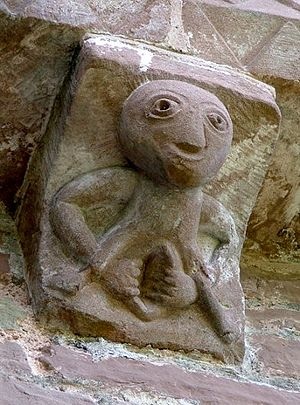
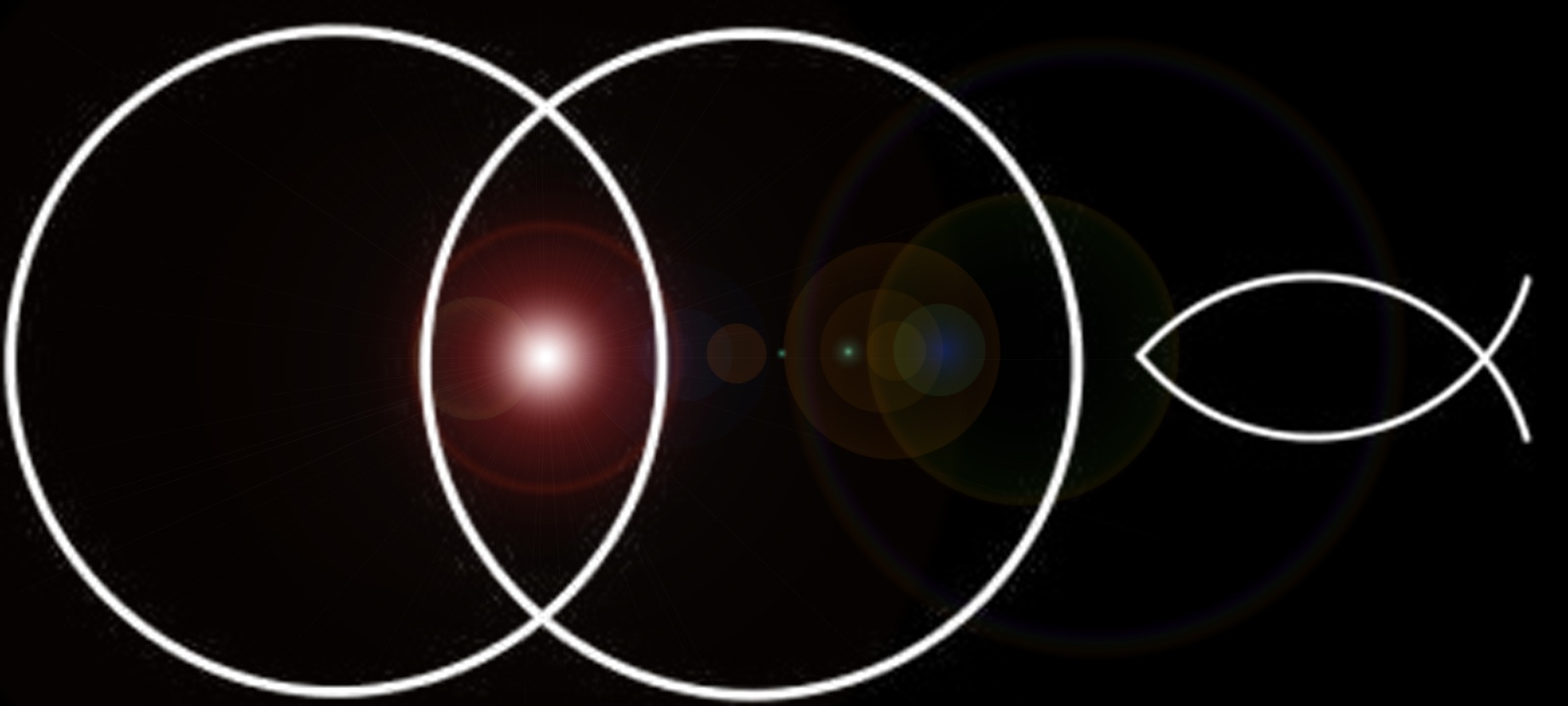
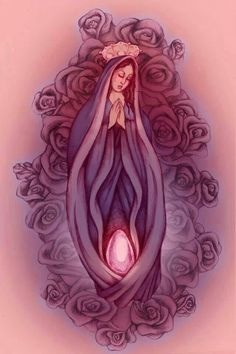
yonis have been recovered from the archeological sites at Harappa and Mohenjo-daro, part of the Indus Valley Civilization. There is strong evidence to support cultural continuation from the Indus Valley Civilization (Harappan; Indus-Sarasvati) to Vedic and modern Hindu practices.
In Shaktism the yoni is celebrated and worshipped during the Ambubachi Mela, an annual fertility festival held in June, in Assam, India, which celebrates the Earth's menstruation. During Ambubachi, the annual menstruation course of the goddess Kamakhya is worshipped in the Kamakhya Temple.
Darshan at this temple is performed not by sight as in most temples, but by touch. There is a large cleft, a yoni in the bedrock moistened by water flowing upward from an underground spring.
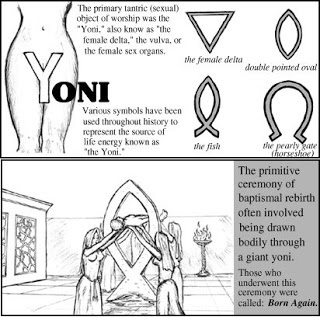
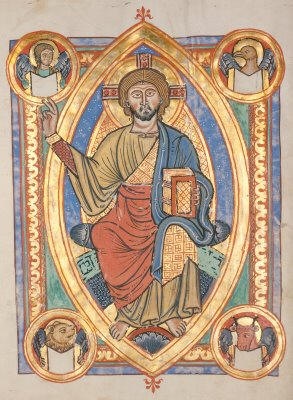
a reply to: Wifibrains
It's just like a Venn diagram i guess, take two given factors our world and another and the Vescia Pisces is those which have common interest in both, through sexual union, thus the symbol of the star/fish people,insemination from the depths of the Celestial waters.
When you consider wells it's important to note how biblical patriarchs such as Jacob met their future wifes at wells, merging a Semitic tribal group into the deep mysteries of the Syriac bloodline and then declaring themselves a chosen people, or take the so called Pool of Abraham at Sanliurfa, formerly a sacred fish pool of Atargatis.
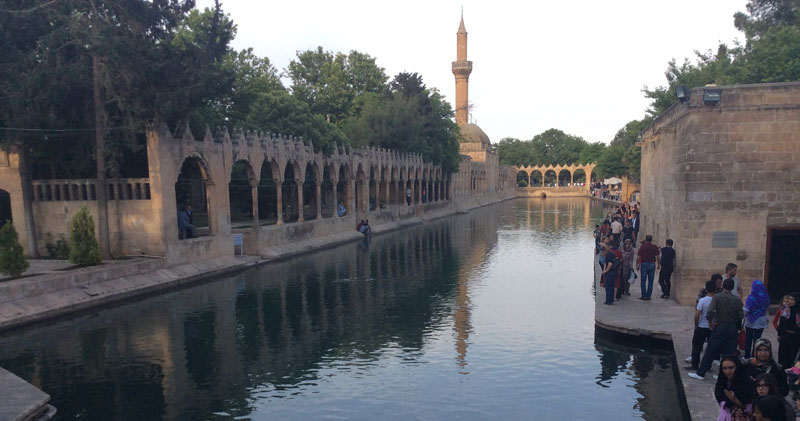
And so it goes on and everyone wants to claim descent from Melusine as it were but generally people are pretty clueless as to why...
a reply to: Nickn3
Yes perhaps, an infamous cosmic coupling...
It's just like a Venn diagram i guess, take two given factors our world and another and the Vescia Pisces is those which have common interest in both, through sexual union, thus the symbol of the star/fish people,insemination from the depths of the Celestial waters.
When you consider wells it's important to note how biblical patriarchs such as Jacob met their future wifes at wells, merging a Semitic tribal group into the deep mysteries of the Syriac bloodline and then declaring themselves a chosen people, or take the so called Pool of Abraham at Sanliurfa, formerly a sacred fish pool of Atargatis.

And so it goes on and everyone wants to claim descent from Melusine as it were but generally people are pretty clueless as to why...
a reply to: Nickn3
Yes perhaps, an infamous cosmic coupling...
edit on Kam1231363vAmerica/ChicagoTuesday3031 by Kantzveldt because: (no reason given)
a reply to: Kantzveldt
I read that the great baths could have been made for the purpose of Hierogamy, suggested by some of the seals and a horned mask was unearthed that hinted towards the role playing in the ritual.

Shiva-shakti can be interpreted as a story of Hierogamy.
learn.coleggwent.ac.uk...
I think these ritual were supposed to "represent" the marriage between human and spirit...
Having had a experience with a "celestial nymph" which is merger or marriage/intercourse between matter and spirit, the coming together of opposites including dream and waking reality, It has since become apparent to me that what I was experiencing is the truth of that for which royalty merely stands symbolic.
www.abovetopsecret.com...
www.abovetopsecret.com...
Found in the almond shape centre of the two intersecting circles. Do I believe I was chosen? No. I believe in destiny, and being in the right place at the right time... In the now.
And how?
www.abovetopsecret.com...
www.abovetopsecret.com...
I have seen what is hidden, and felt what is not there but once was.
While the church claims "the church is the mother of us all." For some that may be, but I beg to differ.
The cypher shows the superimposing of the church matrix. but underneath the organisation of rubble and mortar, the living waters of life still flow, the truth, the true mother of us all will always be.
The church won't facilitate the celestial union/marriage of the above with the below, etc, but "the truth" will deliver the goods.
It's just like a Venn diagram i guess, take two given factors our world and another and the Vescia Pisces is those which have common interest in both, through sexual union, thus the symbol of the star/fish people,insemination from the depths of the Celestial waters.
I read that the great baths could have been made for the purpose of Hierogamy, suggested by some of the seals and a horned mask was unearthed that hinted towards the role playing in the ritual.
Hierogamy (Greek "holy marriage") refers to a sexual ritual that plays out a marriage between a god and a goddess, especially when enacted in a symbolic ritual where human participants represent the deities. En.wiki
Three seals show the same naked figure sitting in a yogic position, bangles on his arms and on two of them he is ithyphallic (an erect penis), suggesting fertility. The largest seal shows him surrounded by wildanimals,inparticular tigers and cattle. All this has led to inevitable comparison with the great Hindu god Siva. One of the seals show three faces which again is another feature of Siva

Shiva-shakti can be interpreted as a story of Hierogamy.
the great bath...
There has been much discussion about its use. Most archaeologists believe it wasn’t for public use as the houses of the city had their own bathing facilities. They have therefore suggested it had a religious use. A mask of a horned being and headdresses have been excavated in the area and it has been suggested that it may have been used as a place of ritual cleansing or bathing prior to worshipping a horned deity.
Around the bath were side rooms which may have been used for a form of sacred marriage called hierogamy. This suggestion has derived from sacred prostitution, a practice in some religions where male devotees believed they would be closer to the goddess through sexual intercourse with her priestesses.
learn.coleggwent.ac.uk...
I think these ritual were supposed to "represent" the marriage between human and spirit...
When you consider wells it's important to note how biblical patriarchs such as Jacob met their future wifes at wells, merging a Semitic tribal group into the deep mysteries of the Syriac bloodline and then declaring themselves as chosen
Having had a experience with a "celestial nymph" which is merger or marriage/intercourse between matter and spirit, the coming together of opposites including dream and waking reality, It has since become apparent to me that what I was experiencing is the truth of that for which royalty merely stands symbolic.
www.abovetopsecret.com...
www.abovetopsecret.com...
Found in the almond shape centre of the two intersecting circles. Do I believe I was chosen? No. I believe in destiny, and being in the right place at the right time... In the now.
And so it goes on and everyone wants to claim descent from Melusine as it were but generally people are pretty clueless as to why...
And how?
www.abovetopsecret.com...
www.abovetopsecret.com...
I have seen what is hidden, and felt what is not there but once was.
While the church claims "the church is the mother of us all." For some that may be, but I beg to differ.
The cypher shows the superimposing of the church matrix. but underneath the organisation of rubble and mortar, the living waters of life still flow, the truth, the true mother of us all will always be.
The church won't facilitate the celestial union/marriage of the above with the below, etc, but "the truth" will deliver the goods.
edit on 30-12-2014 by Wifibrains because: Changed YT link
a reply to: Wifibrains
I read your threads and you have great enthusiasm, which i like as it's a rare and precious thing these days, the almond is the Migdal, the almond Nun is Migdal Nunya or Fish, your intuitions and understandings are correct in those regards i think, the end game is Nanaya
I read your threads and you have great enthusiasm, which i like as it's a rare and precious thing these days, the almond is the Migdal, the almond Nun is Migdal Nunya or Fish, your intuitions and understandings are correct in those regards i think, the end game is Nanaya
originally posted by: Kantzveldt
a reply to: Wifibrains
I read your threads and you have great enthusiasm, which i like as it's a rare and precious thing these days, the almond is the Migdal, the almond Nun is Migdal Nunya or Fish
I did rescue a maiden from a tower once! I have never read that page, or of that practice, but think i may have traveled through time. Lol.
www.abovetopsecret.com...
your intuitions and understandings are correct in those regards i think, the end game is Nanaya
Soverignty? Had I gone through a secret society maybe the hierachies upper echelons are considered soverign... In a closed and corrupt system.
All spirit that comes through here keeps flowing, the well can never run dry if the empty cup is considered as full.
They can keep the matrix house of cards, Im reborn in the otherworld.
new topics
-
Those Drones over NJ and elsewhere
Aliens and UFOs: 20 minutes ago -
South Korean coup was an attempt to start WW3
World War Three: 38 minutes ago -
Archer aviation and the NJ drones
Aircraft Projects: 57 minutes ago -
Only two Navy destroyers currently operational as fleet size hits record low
Military Projects: 11 hours ago
top topics
-
George Stephanopoulos and ABC agree to pay $15 million to settle Trump defamation suit
Mainstream News: 17 hours ago, 17 flags -
Only two Navy destroyers currently operational as fleet size hits record low
Military Projects: 11 hours ago, 8 flags -
Those Drones over NJ and elsewhere
Aliens and UFOs: 20 minutes ago, 2 flags -
Archer aviation and the NJ drones
Aircraft Projects: 57 minutes ago, 1 flags -
South Korean coup was an attempt to start WW3
World War Three: 38 minutes ago, 0 flags
active topics
-
Those Drones over NJ and elsewhere
Aliens and UFOs • 1 • : conspiracytheoristIAM -
Only two Navy destroyers currently operational as fleet size hits record low
Military Projects • 5 • : Oldcarpy2 -
South Korean coup was an attempt to start WW3
World War Three • 1 • : CriticalStinker -
Pelosi injured in Luxembourg
Other Current Events • 40 • : BernnieJGato -
Archer aviation and the NJ drones
Aircraft Projects • 1 • : berbofthegreen -
More Bad News for Labour and Rachel Reeves Stole Christmas from Working Families
Regional Politics • 5 • : Cvastar -
-@TH3WH17ERABB17- -Q- ---TIME TO SHOW THE WORLD--- -Part- --44--
Dissecting Disinformation • 3696 • : MetalThunder -
George Stephanopoulos and ABC agree to pay $15 million to settle Trump defamation suit
Mainstream News • 12 • : TzarChasm -
Encouraging News Media to be MAGA-PAF Should Be a Top Priority for Trump Admin 2025-2029.
Education and Media • 91 • : TzarChasm -
One out of every 20 Canadians Dies by Euthanasia
Medical Issues & Conspiracies • 25 • : fos613
21
